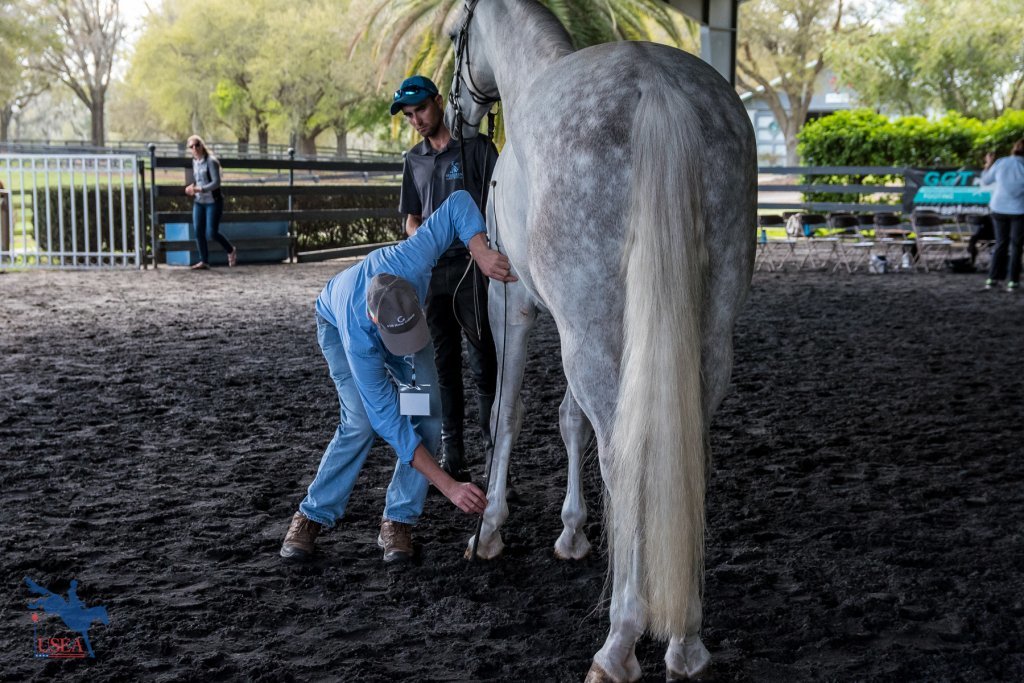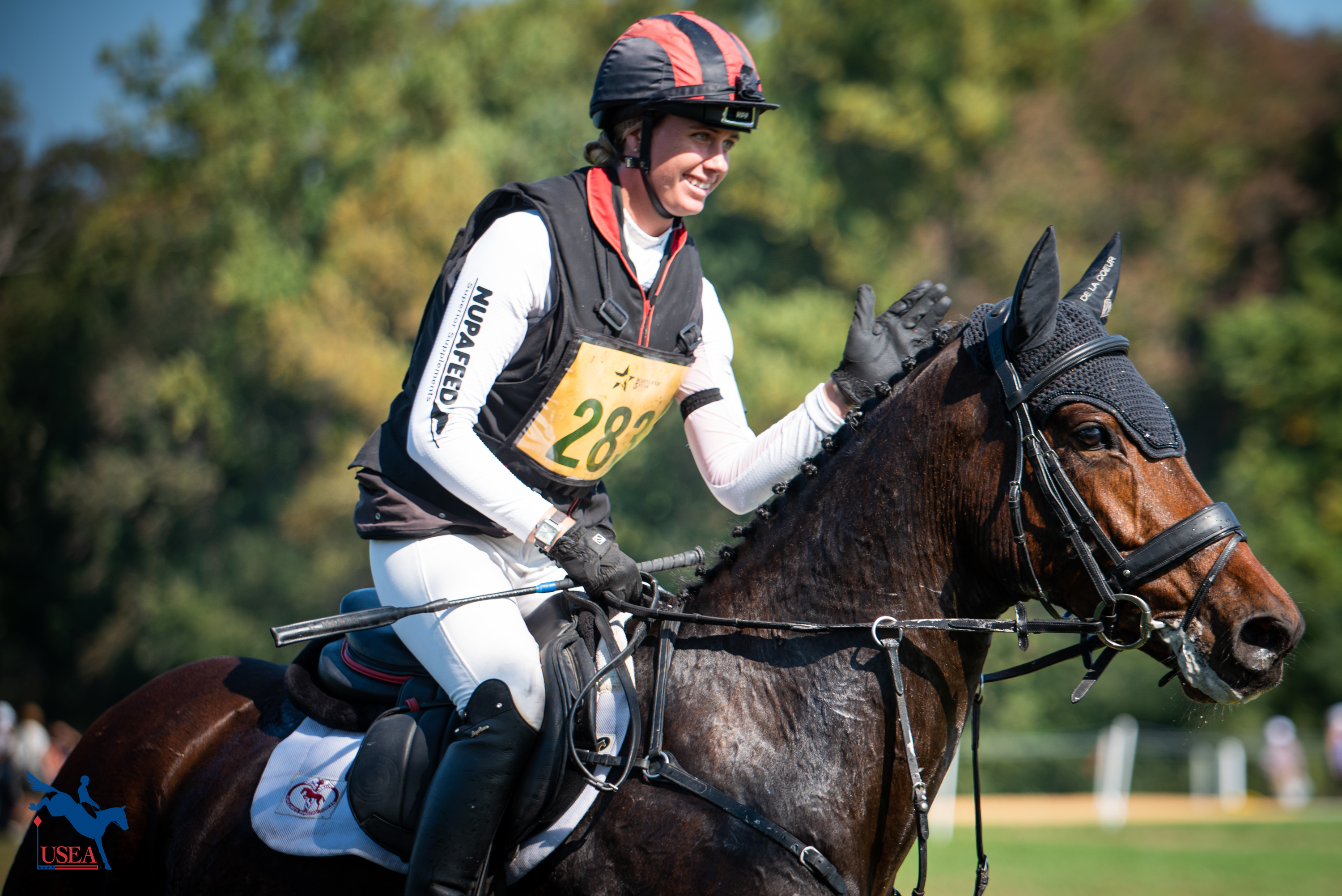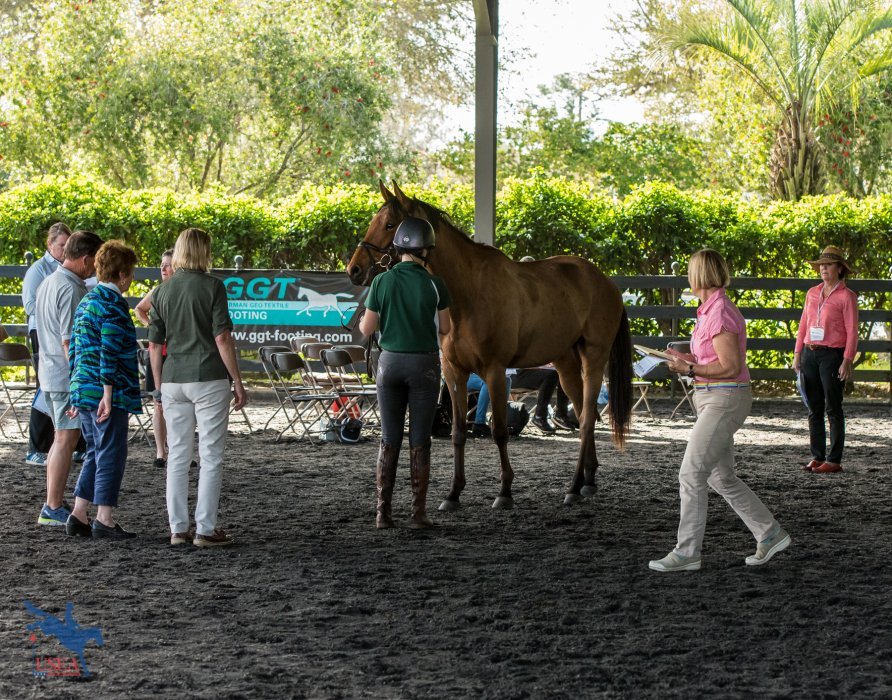Renew Your USEA Membership for the 2023 Season Today LEARN MORE

Note: This is the second in a series of articles the USEA is publishing about young event horses. The first was about “Setting Goals.”
If a horse doesn’t have a proven eventing record, those interested in finding their next eventing partner must use other criteria to evaluate a horse’s potential in the sport. Understanding and appraising a horse’s conformation can be a way to look into a crystal ball for that horse’s future suitability for eventing.
Evaluating conformation can be done by looking at a photo of the horse or by seeing the horse in person. The former is akin to evaluating someone’s profile picture on a dating site. The latter is similar to that first impression someone gets when initially seeing a potential partner on a first date.
Just like a lot of emphasis is placed on how to take a good profile picture for a dating website, the same goes into taking a conformation photo—from having the horse being properly balanced to the right angle and lighting to snap the picture. Presenting a horse for their conformation to be evaluated in person also reflects the same attention people might have when adjusting their posture or making sure they look their best right before a potential date walks in the door.
Trainers that specialize in working with young horses can develop their own personal preferences for conformation. Here’s a collection of different criteria that a variety of young event horse specialists have shared that they use when evaluating a horse’s conformation for potential success in eventing.

Kelley Hutchinson, Hutchinson Sport Horses, who sourced HSH Connor and other championship-level young horses: “From a conformation point-of-view, I love something that’s a little more uphill. Of course at 3 and 4, they’re usually going to grow and develop through their withers, but if you’re starting with an uphill shoulder and a nice front, then you’re already a little bit ahead of the rest. And then, I find the hinds legs to be very important; not having a hind leg that’s overbent that might lead to problems down the line. Lastly, and it’s hard to see off a picture, the hocks and the feet are the most important part. They’re what takes all the impact and compression. From there on, I don’t mind if a horse is a little bit overweight, or if they look underdeveloped, you can always build muscle.”

Chris Ryan, YEH Championship judge and author of the “Conformation Critique Series”: “I suppose when we’re trained up to do it, our eye will go to the weakest points straight away. That’s what we’re used to doing—whether that’s back of the knee, or whether that’s a very upright pastern, or whether that’s a very overbent hock. I don’t like a very heavy head-to-neck connection. They’ve got to be able to breathe. They’ve got to be able to breathe easily. So, these are all things that would come to my view very quickly, and your eye gets drawn there straight away. I think perhaps as soon as you see quality—and when I say quality, I suppose Thoroughbred influence is a big one if they have the quality to make up into a five-star horse—for that, you are looking at the strong Thoroughbred influence of nice and deep for heart and lung room, lightly-limbed, and I’d like to see them move and how light on the feet are they. It takes a lot of time and money to get horses from the early days to the five-star level, and for that you want a very sound horse. If they’re light on the ground, they’re light everywhere, and they’re easier on their body because of that lightness.”
Richard Lamb, ECP-certified YEH Professional Horse Trainer, Bronze with Distinction: “I like a horse with an uphill conformation, higher in the withers with the head and neck coming out more or less at the top in front of the withers, not set too low. A flat back, more or less. And a good angle behind—not too straight because that puts too much pressure on the joints and especially the stifles and the hocks behind.”

Tamie Smith, 2023 winner of the Land Rover Kentucky Three-Day Event with YEH graduate Mai Baum: “Feet and legs are super important to me as far as the longevity of a horse, especially in our country because if you’re buying a horse outside of our country, conformational defects are more impactful for those horses in the longevity of them because our ground all throughout the country is not as forgivable as it is in like Poland, Germany, the UK, Ireland. Their ground is much softer, and so the defects of a conformation in a horse’s leg or foot or something like that would not impact those horses as heavily as they would in the United States.”
Lauren Nicholson, who has ridden 12 horses over more than a decade of YEH competitions: “As 4-year-olds, they still have so much growing to do. I’ve had some that look like they don’t have great conformation as 4-year-olds, and then as they grow into themselves, they are stunning. As long as their legs and their feet look like they can go a thousand miles, but if they have bad feet, I don’t want anything to do with it because in the end for eventing they need to be able to travel miles and miles and miles on their legs and feet, and if they don’t have the type that’s going to hold up, then it doesn’t matter how nice they are. From the knee up, I don’t overthink it too much.”
Sharon White, who has produced multiple horses to the five-star level: “I’m a big feet person and leg person. You want good feet and straight legs. Those to me are the most important to start, and then body shape. I’m not an expert on conformation, and I don’t pretend to be, but I think you can look at a horse and see where their balance is. You’d love little bit more of an uphill balance for our sport these days. You’d love hocks a little low to the ground for good jumping. The wonderful thing about eventing is you’ll see lots of different shapes of horses doing it really well, and I think that it’s a sport that allows for some conformational, what would be not classic conformation, not classically built, and be really fantastic event horses.”